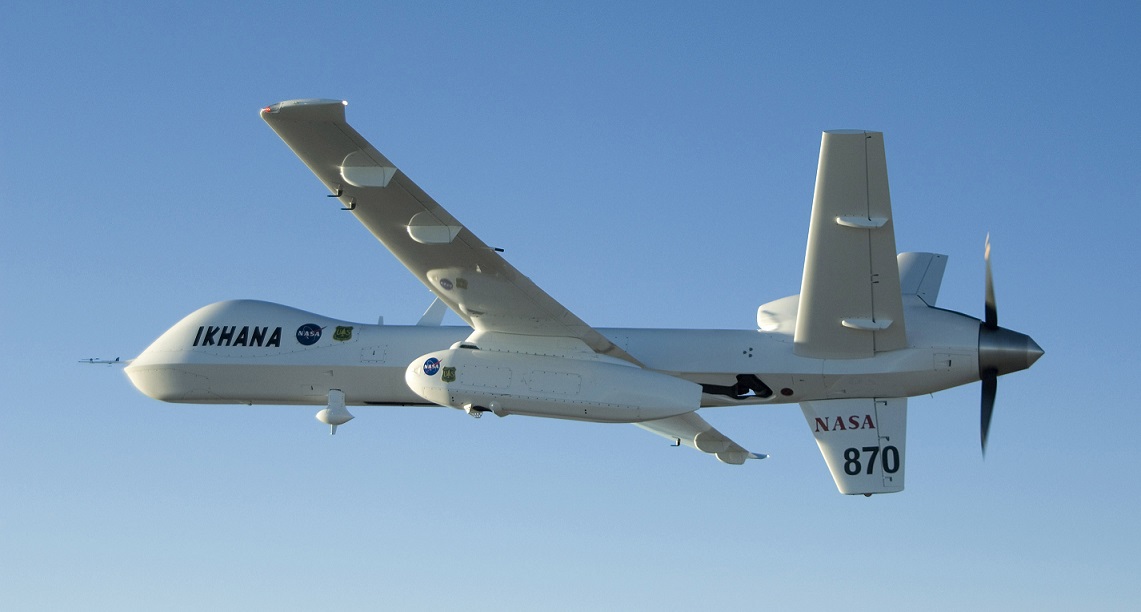This post is also available in:
 עברית (Hebrew)
עברית (Hebrew)
The US moves one step closer to normalizing unmanned aircraft operations in the airspace used by commercial and private pilots. NASA’s remotely-piloted Ikhana aircraft flew in public airspace for the first time without a chase aircraft. The FAA granted the space agency a waiver to test out several key technologies they’ve been developing to detect and avoid other aircraft. They wanted to know if this baby bird could fly on its own among piloted planes, and it passed the test, according to endgadget.com.
This was the first remotely-piloted aircraft to use airborne detect and avoid technology to meet the intent of the FAA’s “see and avoid” rules.
Ikhana is part of the Unmanned Aircraft Systems Integration in the National Airspace System project, or UAS-NAS, developing new technology that will make it possible for large drones to have access to airspace typically occupied by human-piloted planes.
The aircraft, which is a modified MQ-9 Predator B unmanned aircraft system, successfully flew its mission. Flying these large remotely-piloted aircraft over the US opens the doors to all types of services, from monitoring and fighting forest fires, to providing new emergency search and rescue operations.
The Ikhana aircraft was equipped with detect and avoid technologies, including an airborne radar developed by General Atomics Aeronautical Systems, Inc., a Honeywell Traffic Alert and Collision Avoidance System, a Detect and Avoid Fusion Tracker, and an Automatic Dependent Surveillance-Broadcast capability – a surveillance technology where the aircraft determines its position via satellite navigation and periodically broadcasts this information so other aircraft can track it.
“We are flying with a suite of sophisticated technology that greatly enhances the safety capabilities of pilots flying large unmanned aircraft in the National Airspace System,” said Scott Howe, Armstrong test pilot. “We took the time to mitigate the risks and to ensure that we, as a program, were prepared for this flight.”


























